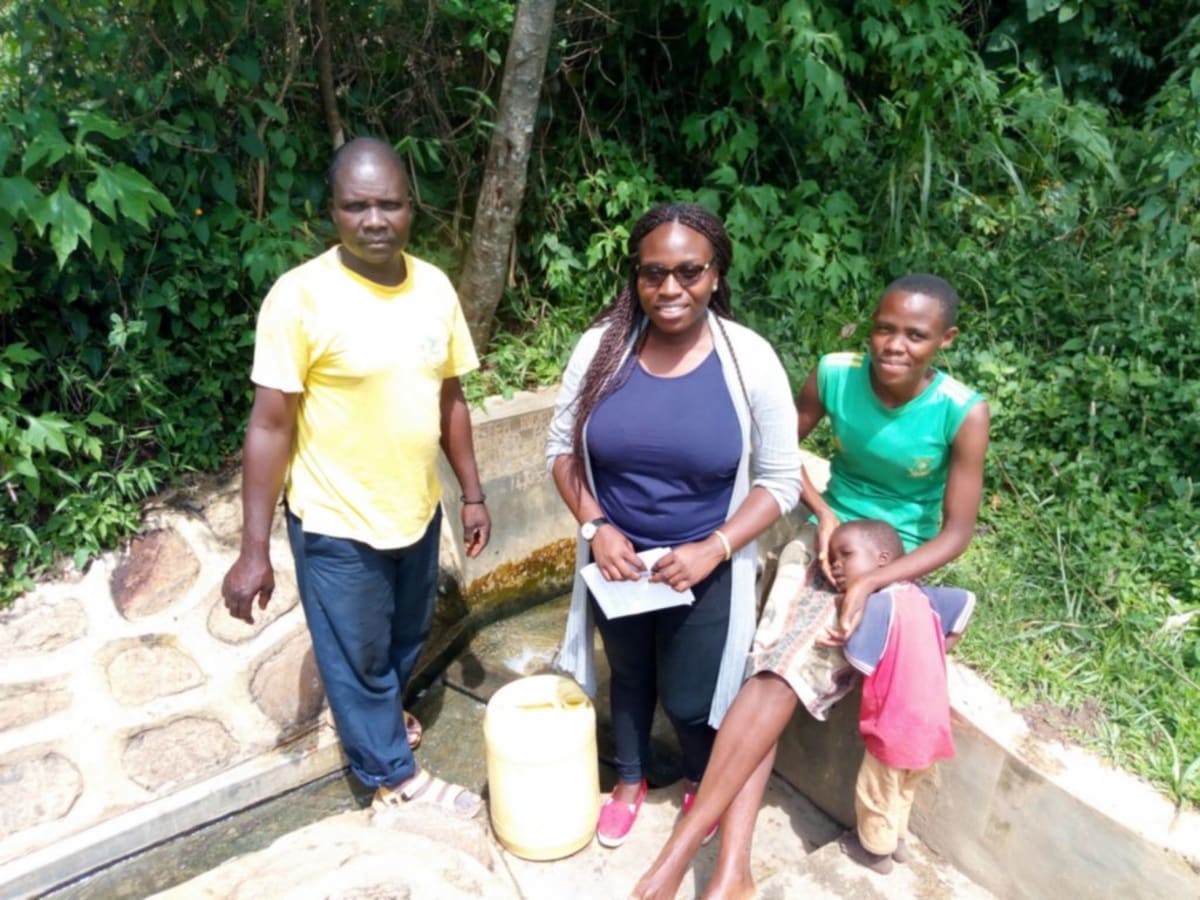This project is a part of our shared program with Western Water and Sanitation Forum (WEWASAFO). Our team is pleased to directly share the below report (edited for clarity, as needed).
Welcome to the Community
Peter Indeche Spring is found in Makale Village, Mahusi sub-location, Chegulo location, Butali Chegulo Ward of Kakamega County. Most residents of Makale Village are farmers. They grow sugarcane at a large scale, selling their crops to the nearby West Kenya sugar millers. The sugar factories in this sub-county are responsible for supporting hundreds of families: farmers, transporters, workers. At midday, women rush home to prepare a meal for their children who come home from school for lunch break. Women feed their children, and men take a break to take their animals out to graze. When children are home from school in the evening, the entire family breaks for dinner and fellowship, and then rest for work the next day.
Water Situation
The main source of water for this community is Peter Indeche Spring, which is unprotected. This leaves the spring's water open to contamination from sources like surface runoff, erosion, animals, and waste that is improperly disposed.
The spring is approximately 400 meters away from Friends School Chegulo Primary. This unprotected spring serves a population of approximately 20 households, each having an average population of eight people. Information gathered from the elderly spring users and villagers confirmed that the spring has never gone dry. "Ever since I was born, I have never seen this water dry up even as old as I am today, it’s been serving the community even during the dry seasons," confirms one user.
If protected, it will help villagers access safe and adequate drinking water. Community members who directly depend on the spring will no longer suffer from waterborne diseases such as cholera, typhoid, amoebic dysentery and others. Users will enjoy their right to health, boosting their confidence and ultimately improving their livelihoods.
Sanitation Situation
Under a quarter of households have their own latrine. The other community members use bushes and the privacy of large sugar plantations. Many of these people are either children or elderly who fear balancing over the latrine's pit, especially because many of the floors are old and rickety. During our visit, we observed that open defication is a huge issue for this community. Flies are attracted to this waste, and flies carry germs to food.
Most people here do not have clotheslines and dish racks to dry their things; they dry dishes and clothes on the grass. Health and hygiene training on water-handling, the chain of contamination, and waterborne diseases will be key in this community.
Plans: Hygiene and Sanitation Training
Community members will be trained for three days on a variety of health, hygiene and sanitation topics. This training will result in community members donning the roles of health workers and water user committee members. The training facilitator plans to use PHAST (Participatory Hygiene and Sanitation Training), CLTS (Community-Led Total Sanitation), and ABCD (Asset-Based Community Development) methods to teach community members, especially the women and children who feel the burden of household responsibility. Training will equip each person with the knowledge needed to practice viable and effective health solutions in their homes and at the spring.
During training, we will take this community on a transect walk to sensitize them to some of the more serious health threats. The transect walk will teach locals to watch for practices that go on and facilities that are present related to good health and hygiene. Sometimes, a participant feels shame when the group arrives at their household and points out things that are unhealthy or unhygienic; but in Kenya, this affects people to make a positive change. Training participants will also vote on and decide the families that should benefit from the five new sanitation platforms.
Plans: Sanitation Platforms
The five families chosen by the community will receive a sanitation platform, which is a concrete floor that makes a great foundation for a safe and clean latrine. These families will prepare by sinking a pit that the concrete slab can be placed over. These five new latrines will go a long way in reducing the level of open defecation in this community!
Plans: Spring Protection
Locals are eagerly preparing for this spring protection project. They have agreed to gather the local materials needed for construction to begin, which include sand, ballast, hardcore, bricks, fencing poles, and even a few helpful hands!
When visiting Peter Indeche Spring we met Emily, a local farmer who says,
"We have for a long time never seen clean water in this area. Since I got married here, I have been drawing water from this point but never at all seen this spring dry off. All my children were born while we draw water from this source, and as a mother I have had to incur medical costs and long queues in the hospitals. I think the entire community needs knowledge on sanitation and hygiene. Most affected are the children. Sometimes we have been forced to queue and sit here on our jerrycans waiting to draw water, we will be pleased to see this spring protected."

 Protected Spring
Protected Spring
 Rehabilitation Project
Rehabilitation Project
























